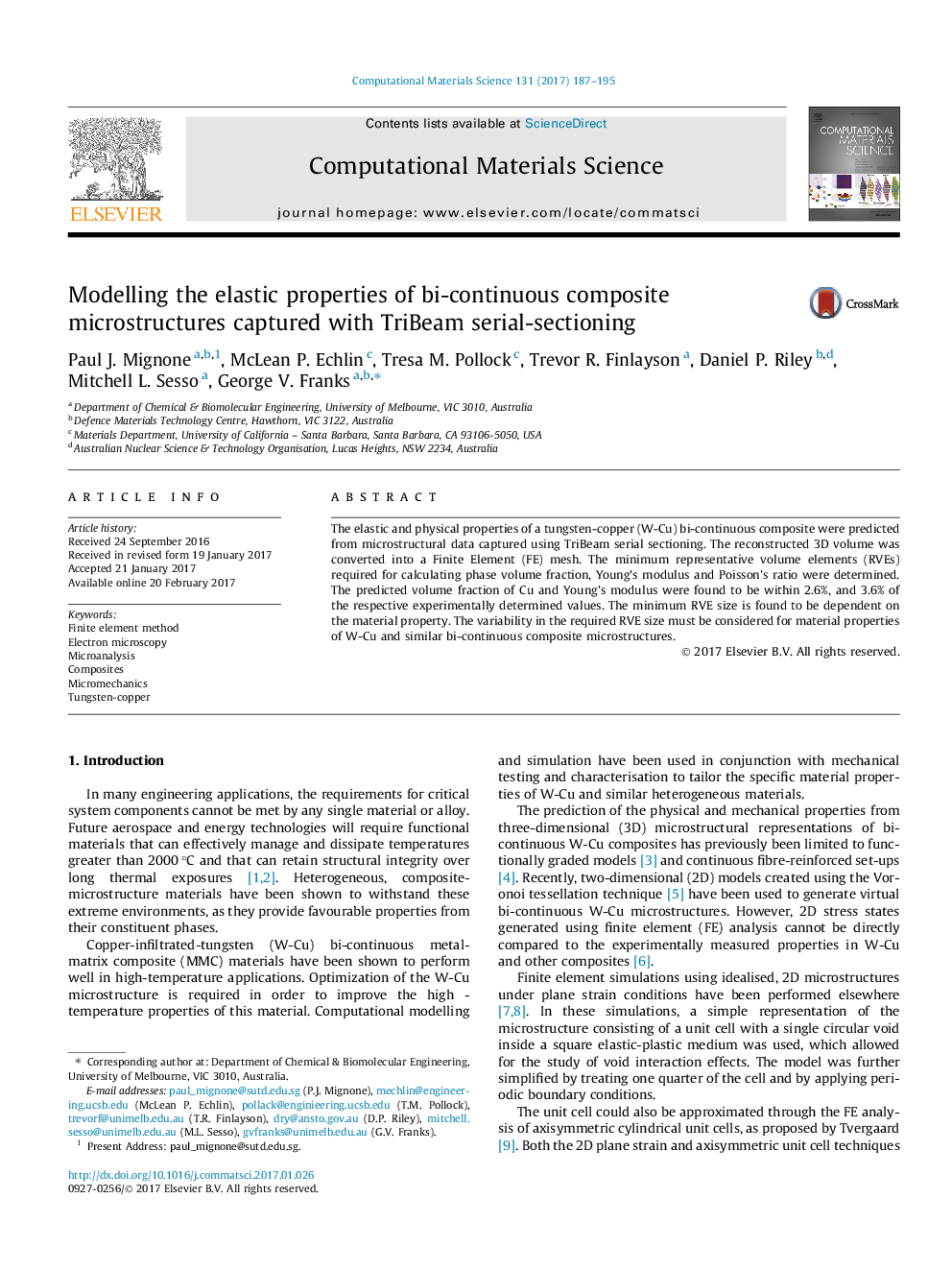| کد مقاله | کد نشریه | سال انتشار | مقاله انگلیسی | نسخه تمام متن |
|---|---|---|---|---|
| 5453234 | 1513881 | 2017 | 9 صفحه PDF | دانلود رایگان |
- Tribeam serial sectioning was used to capture the microstructure of a W-Cu composite.
- FEA was used to model the volume fraction, Young's modulus and Poisson's ratio.
- The predicted Young's modulus was within 3.6% of the experimental value.
- The minimum RVE decreased in order volume fraction > Young's modulus > Poisson's ratio.
The elastic and physical properties of a tungsten-copper (W-Cu) bi-continuous composite were predicted from microstructural data captured using TriBeam serial sectioning. The reconstructed 3D volume was converted into a Finite Element (FE) mesh. The minimum representative volume elements (RVEs) required for calculating phase volume fraction, Young's modulus and Poisson's ratio were determined. The predicted volume fraction of Cu and Young's modulus were found to be within 2.6%, and 3.6% of the respective experimentally determined values. The minimum RVE size is found to be dependent on the material property. The variability in the required RVE size must be considered for material properties of W-Cu and similar bi-continuous composite microstructures.
90
Journal: Computational Materials Science - Volume 131, 15 April 2017, Pages 187-195
